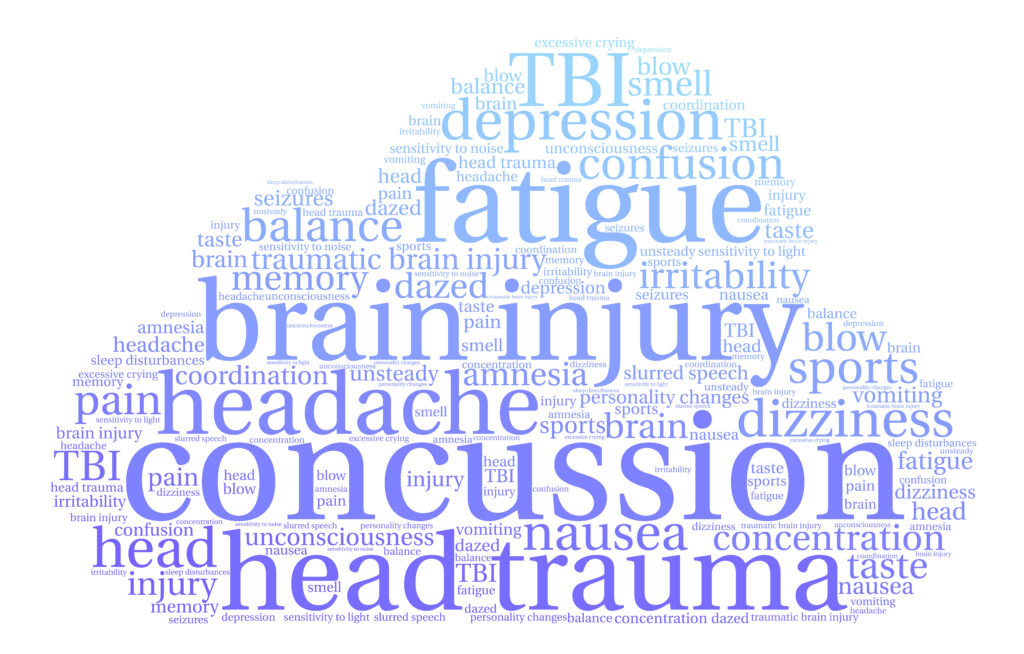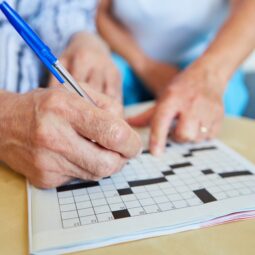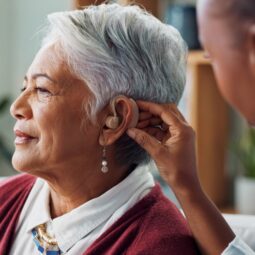By Heidi Tyson, OT, CHT, occupational therapy

Even though medical providers describe some concussions as “mild,” there’s really no such thing as a mild concussion. All concussions are traumatic brain injuries that need to be taken seriously.
A concussion can happen any time your head or body takes a hard enough jolt to rattle your brain inside your skull. You don’t have to crack your head or pass out to have a concussion. Even a hard landing on your feet can bounce your brain against the inside of your skull.
Like any other injury, a brain injury requires rest, time, and sometimes treatment to heal. Rushing to get back to your activities, or trying to gut out your symptoms without treatment, can impede your recovery and risk long-term problems. As I tell my concussion patients, you only get one brain. Once it’s injured, you can’t replace it, so it’s critical to do everything you can to help it heal.
What to look for, and when to see a doctor
Since brain injuries happen inside your head, the signs aren’t always as obvious as a lump or a bump, and they don’t always show up immediately. If you’ve hit your head in a fall or an accident, or taken a hard knock in sports, take it easy for a couple of days and pay attention to how you feel.
Classic symptoms of concussion include headache, brain fog, dizziness and nausea. If you have any of these symptoms, or if you just feel “off,” you should contact your primary care provider or go to an urgent care center for an evaluation. Parents, if you suspect that your child has a concussion, here’s what you need to know.
During your evaluation, your provider will review your symptoms and may perform some neurological and cognitive tests to check your balance, eye tracking, thinking speed and other brain functions. Imaging usually isn’t needed, since concussions can’t be seen on an MRI or CT scan.
After a concussion diagnosis, some patients are referred for observation or treatment, but most get the green light to return home, with important self-care instructions.
After a concussion, give your brain a rest
Medical professionals used to tell concussion patients to stay in a dark room and avoid all mental stimulation. We don’t go that far anymore, but we do advise that you rest, try to stay away from TV and computer screens as much as possible, and avoid overstimulation. Your brain needs some downtime. A little bit of exposure is OK, but if an activity increases your symptoms, back off.
Physical activity should be dialed back during recovery, too. Be very careful to avoid any activity that could cause further injury to your brain, such as high-impact exercises and sports. Contact sports are definitely out while your brain is healing. Here are more tips about what to do and what to avoid while recovering.
Ongoing symptoms need treatment
If your headache, dizziness and brain fog don’t resolve on their own within two weeks, they probably won’t without specialized treatment. At this point, your next step should be an evaluation by a therapist who specializes in concussion. According to research that I participated in, patients with ongoing symptoms recover faster when treatment begins within 2-4 weeks of the concussion.
Therapists often take a two-pronged approach to treating concussion symptoms:
- Ocular motor therapy: many of the problems with dizziness and cognition that come from concussion are driven by problems with the communication between your brain and your eyes. This therapy focuses on helping your eyes relearn how to team together, and on helping your brain interpret what both eyes are seeing simultaneously.
- Vestibular therapy: this involves exercises that help restore your sense of balance.
The therapy process typically lasts about three months, although some people benefit from additional follow-up. During this time, the therapist also works with you to determine a safe pace for returning to activity without overstimulating your brain and worsening your symptoms. For most people, the headaches, dizziness and brain fog gradually decline and resolve, and life begins to return to normal.
Moving ahead
It may be tempting to jump back into all of your activities after you’ve recovered from a concussion – and most people can. But keep in mind that the effects of concussions tend to be cumulative: once you’ve had one, any additional concussions in the future may bring on worse symptoms, more challenging recoveries, and a higher risk of long-term problems with movement and brain function. So move ahead in life with joy, but also with caution. This is your one and only precious brain. Take good care of it.


